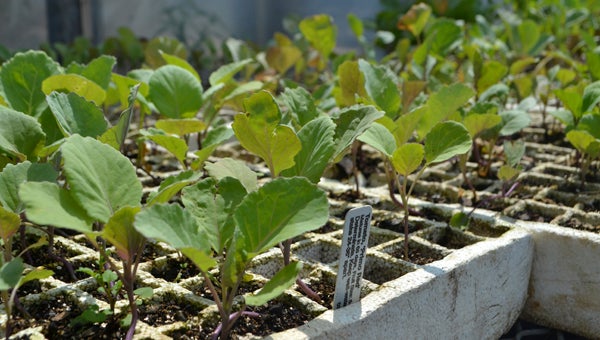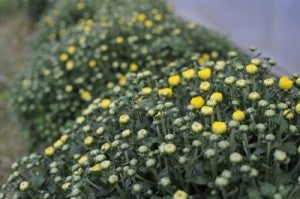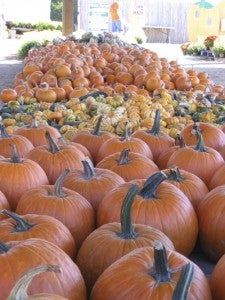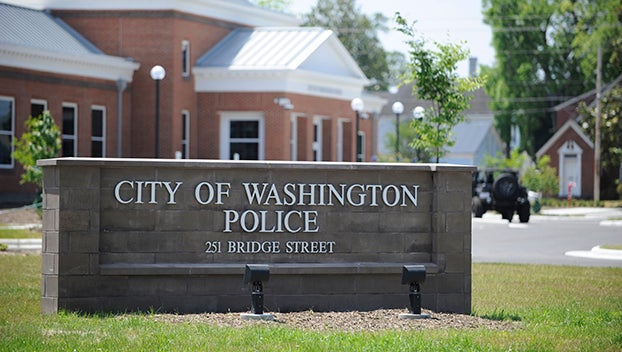Knowing what and when to plant
Published 6:26 pm Thursday, September 3, 2015

JONATHAN ROWE | DAILY NEWS
FALL VEGGIES: Yellow cabbage collards and roundhead cabbage, pictured here at Petals and Produce in Washington, can be planted in late summer to early fall. When planting a fall garden, consider the time required for your vegetables to produce and also the period for harvest.
As the cool, crisp air of fall makes its first appearance in Beaufort County, local gardeners should expect the worse and hope for the best, as both weather and insects can make or break local vegetable gardens.
According to Dan Bergbauer, Beaufort County Cooperative Extension master gardener, vegetable gardeners shouldn’t set their expectations too high when planning their fall vegetable gardens. One factor that cannot be controlled is weather, as the area is historically prone to periods of both drought and excess rain.
Bergbauer says with the weather still being rather hot through September, planting should be done in the middle of August to as late as the end of September. The first frost of the year is around the first week of November and can play a big part in what vegetables can be planted and when.

VAIL STEWART RUMLEY | DAILY NEWS
FALL DISPLAY: Chrysanthemums, a popular and common fall flower, are new perennials capable of wintering in most northern latitudes.
With a hard freeze rare until the middle of December, local gardeners have about 60 days of growing season for warm-weather crops, such as some varieties of beans, squash and cucumbers if they plant in early September and 100 days for cool-weather crops that tolerate light frost.
Fall vegetables are mostly the same as those planted in late winter and early spring: lettuce, radishes, beets, peas, cabbage, broccoli, cauliflower, kale, spinach, collards, mustard and turnip greens and turnips. A few vegetables like peas, onions and garlic will continue to survive the cold weather and continue to grow once the weather warms in early spring. Gardeners can protect plants and vegetables from cold weather, using mulch or pine straw to insulate them, Bergbauer said.
“They’ll go through frost and sometimes heavier frost if you mulch them in,” Bergbauer said. “It’s sometimes like throwing dice because you don’t know what the weather is going to be like, but if you pass certain dates, they won’t have enough time to produce.”
But deciding what to plant should be based on the time required for the vegetables to produce, which is listed on the seed packets, as well as the period for harvest, Bergbauer said.
“If it takes 55 days to first produce and has 15 days of harvest, there should be at least 70 days between the time you plant and the first frost,” Bergbauer said. “Planting them by the first of September still might be okay if there is no early frost this year.”

FILE PHOTO | DAILY NEWS
FALL FAVORITE: A cultivar of the squash plant, pumpkins are a widely popular plant, traditionally used for decoration during Halloween and utilized to make pumpkin pie for Thanksgiving and other seasonal occasions. Pumpkins are a warm-weather crop, usually planted in early July, and require soil temperatures of at least 60 degrees and soil that holds water well. They may suffer if there is a lack of water or because of cold temperatures.
Another factor that vegetable gardeners should keep a lookout for is insects. From now until at least the middle of October is a high insect period, which means gardeners should keep a close watch over their gardens. In late summer, the growing environment is more hostile for planting vegetables due to extended periods of both drought and rain and hot weather. But planting a variety of vegetables, as well as reading up on fall gardening online or in gardening books, will aid in the success of the fall harvest, Bergbauer said.
“You can raise your rows to combat against rain so the roots don’t get soaked and suffocated. Also, to get a good garden, you need to spray whether it’s organic or nonorganic. Normally, you don’t spray until you see insects, however. You learn by trial and error, but it helps to read literature. Don’t put your expectations too high. Then when you have some success, be happy. It takes attention. You have to have harmony with your garden. It’s a partnership, but it takes you to make things happen.”
Gardeners can also plant a variety of flowers in the fall, according to Terra Ceia farmer Sandy Ratcliff. One thing to keep an eye out for, however, are weeds that could overcome seedlings.
Some plants — bulbs or seeds — will germinate and perform better than if planted in spring because they can endure colder temperatures and have time to establish themselves over the winter, Ratcliff said. Both Larkspur and nigella will germinate in the fall, as well as daffodils, grape hyacinth, tulips, oriental lilies and chrysanthemums.
For more information about fall gardening, contact the Beaufort County Cooperative Extension Master Gardeners at 252-946-0111.





